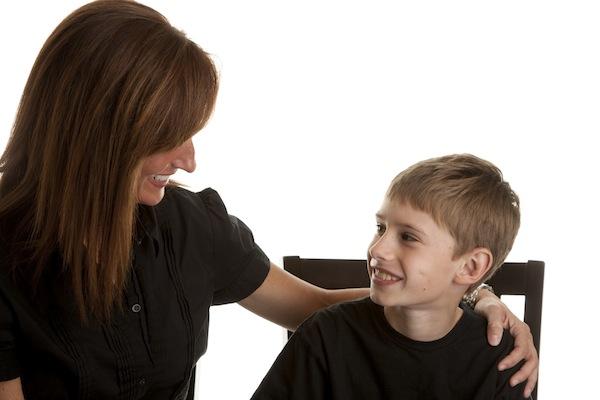Ways To Talk So Your Right Brain Kid Can Hear You

Every parent has experienced the frustration of trying to get their kid to listen and do what needs to be done. But when you have a right brain thinker, there are even more challenges. There’s a lot going on in their head, ALL the time. It’s like they have headphones on with music or video blaring – but there are no headphones. Their mind is just that active and we can’t see it. To get their attention and keep it, you have to do things a little differently.
Here are some things that work:
Make eye contact. It takes extra time, but the sooner you pause and get in front of your child the sooner he’ll hear you. Remember their minds are always churning, so you’ve got to get their attention. But it’s not going to happen by shouting across the room or doing 12 other things. Get eye level if you can and only speak when you know you’ve got his attention.
Less is more. Now that you have their attention, keep it simple. Too many words or directions are going to overwhelm and send them back to their mental happy place. Instead of saying, “Don’t forget to hang up your towel after you shower. You always forget, and it needs to dry out. So, hang it up this time.” Get to the point. Use less words and short phrases. Instead say; “Hang up your towel.” Sometimes even single words for reminders. “Towel!”
Write it down. Once you’ve connected and they know they’ve got things to do, write them down. Having a written list can help them work more independently and gives them a reference to help stay on task. Getting out the door in the next 5 minutes is not a list kind of activity but cleaning up or doing chores can be. Create simple lists they can check off. Again, short phrases or single words. Add pictures when possible.
Limit how many directives at one time. Right brain kids process a limited number of steps at a time. Even when you’re giving them simple directives, too many at one time can derail them. To get out the door in the morning they may need to do 9 things. For more success overall give directions in stages. Instead of saying “Do you have everything?” start with first steps; “First get your lunchbox and backpack.” Once they’ve done those you follow up with, “Now get your shoes and coat on,” and carry on until complete.
Be Specific. This is huge. So much confusion and frustration can be eliminated when you get more literal and specific about what needs to happen. Even a simple phrase that seems obvious like “Eat your snack and do your homework now.” may be too vague. What snack are they eating? What do they do first in the homework folder? “Eat your apple. Then do your math homework.” Tell them what exactly needs to happen.
Positive reminders. No matter how clear your directives were, expect to do some follow up reminders. Right brain kids are easily distracted. All to often I sent a child to get dressed and 20 minutes later they were still in their pajamas playing Legos. They’re not trying to be difficult. Their minds really do wander off track easily. To get back on track, keep them focused on what they need to do. Don’t run on about what’s wrong. My grandson likes when his mom says, “Did you get stuck?” More than “Did you forget what you’re supposed to be doing?” Keep it simple and keep them moving forward. Use a single word. Visual clues. Maybe a song.
Let them tell you what’s next. It’s easy to keep telling a child what to do, because there are times it just needs to get done. But when possible, let kids tell you what needs to happen next. Ask them questions like: “What’s next?” “What do you do now?” “What do you need to be ready to go?” This allows them to practice using their executive function. And allows them to feel in control of what’s happening.
Smile more than lecture. As much as we grow weary of the energy and effort it can take to do the simplest things, our kids are even more tired of it. They’re not doing it on purpose or, to drive you crazy. Their struggle is real. Your struggle with this is real. But you’re the grown up and the one that can help. To keep things moving forward for both of you, catch them doing things right. Be kind and full of compassion, for both of you.
I hope you feel like there are a lot of good ideas in here. Using these techniques has helped me so much with my kids and now my grand kids and made me a much kinder adult. Paying more attention to what I was saying and the way I was saying it, required me to slow down and adjust my expectations. But I didn’t learn it all overnight. Choose two things on this list that you think will be the easiest for you to implement. After you have mastered those, pick two new ones and implement them next.
Leave a comment below and tell me – what worked for you!











January 21, 2019 @ 4:01 pm
I think I do pretty well with eye contact, but your reminder has spurred me on to be more consistent with it. I also want to give fewer directions at one time. I’m sure there are times when I rush through too many at once, which isn’t good for the students’ understanding – or my own goal of effectively teaching the lesson. Last of all, I like the idea of asking students “what’s next?” Surely I can keep these goals uppermost in my mind!!